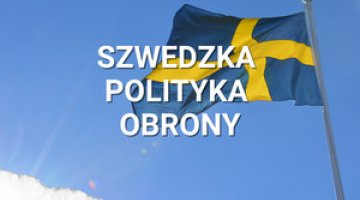Sweden’s reaction to a simulated Russian attack
On 22 April, the Swedish newspaper Svenska Dagbladet carried a story that two Russian Tu-22M3 bombers escorted by four Su-27 fighter aircraft took part in exercises at night on 29/30 March in international airspace, approximately 35 km from the Swedish border. Quoting military sources, the newspaper reported that the Russian aircraft had been simulating attacks on two military targets: one near Stockholm and one in southern Sweden. The Swedish Air Force did not react. In turn, two Danish F-16 fighter aircraft, which were on duty as part of NATO’s Baltic Air Policing mission, shadowed the Russian aircraft from a distance close to the Swedish border.
Commentary
- The lack of a reaction from the Swedish Air Force to the Russian exercises proves that this most important branch of the Swedish Armed Forces has structural problems and may be unable to cope with all the tasks it has been entrusted with. In theory, at least two JAS 39 C/D fighters should form a quick reaction alert (QRA) to guard the Swedish airspace twenty-four hours a day and also to escort foreign aircraft in international airspace close to Sweden’s borders. According to media reports, there was no Swedish QRA at night on 29/30 March. There might be several reasons for this. Firstly, a great part of JAS 39 C/D fighter squadrons and ground crew were engaged in the first quarter of 2013 in national (Flygvapenövning 2013), regional (TTP) and international (including Red Flag) exercises, necessary to meet the goals of the military reform and to ensure the interoperability of the Air Force. Secondly, the Swedish Air Force is short of staff, including both JAS 39 C/D pilots and ground crew (such as technicians). Thirdly, legal regulations impose restrictions on the working hours of soldiers during peacetime, and the Armed Forces have also financial problems. Moreover, for these reasons, gaps in the QRA might have occurred for at least the last two years.
- Reports on the Russian exercises and the lack of response from the Swedish QRA have animated the Swedish debate on defence policy and on the condition of the Armed Forces, which started in the beginning of 2013. However, the government seems to view the fact that this information was revealed as another instrument of pressure from those journalists, analysts and military who are calling for change in the defence policy, for a reform of the Armed Forces and an increase in military spending. The Moderates, being the largest coalition party, have rejected any discussion so far on defence policy or higher spending on defence to the detriment of other purposes, having in mind the budget consolidation and the campaign ahead of the election in 2014. For this reason, Defence Minister Karin Enström and Foreign Minister Carl Bildt have made attempts to tone down the discussion on the Russian exercises and the capabilities of the Swedish Armed Forces. Enström made a statement that, since Swedish airspace was not violated, the issue of the Russian exercises will not be raised in relations with Russia.
- The Russian exercises fit in with the intensified activity (including strategic bombers) of the Russian Air Force in the Nordic-Baltic region. The Nordic states see this as a demonstration of the Russian presence and its military potential in the region. Russia resumed flights of strategic bombers capable of carrying nuclear warheads in the High North in 2007 and in the Baltic region in 2011 (in international airspace). However, the manoeuvres of 29/30 March were probably the first Russian exercises to simulate a direct attack on Sweden since the end of the Cold War.





